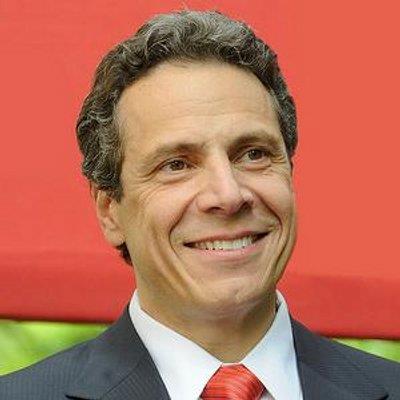
Governor Cuomo Announces Proposed Emissions Limits to Protect Public Health and Air Quality
New State Rule to Reduce Emissions of Nitrogen Oxides and Particulate Matter
Governor Cuomo recently announced New York State has proposed a new statewide
regulation that will improve air quality and protect public health by
placing limits on emissions from distributed generation sources such as
diesel generators and natural gas-fired engines. This new regulation will
align New York State with federal air quality standards and help mitigate
climate change.
"Establishing limits on these harmful emissions is a critical step
towards protecting air quality, as well as the health of New Yorkers,"
said Governor Cuomo. "These new standards will reduce pollution, further encourage the
development of renewable resources and support this state's efforts
to combat climate change."
The proposed rule, 6 NYCRR Part 222, specifically targets nitrogen oxides
and particulate matter emissions and is an important component of New
York State's effort to meet the new, stricter ozone national ambient
air quality standard (NAAQS) by 2018, as required under the federal Clean
Air Act. Nitrogen oxide emissions contribute to the formation of ground-level
ozone, the principal component of smog. Both ozone and particulate matter
can cause adverse health effects, including respiratory problems such
as asthma, shortness of breath, coughing and nasal irritation. This new
rule also reduces other toxic pollutants caused by diesel fuel combustion
and it will encourage the use of non-emitting renewable distributed energy sources.
The New York State Department of Environmental Conservation is accepting
public comments on the proposed rule through February 18, 2016.
Acting New York State Department of Environmental Conservation Commissioner
Basil Seggos said, "This proposed rule reduces pollution while maintaining energy reliability
and is a strong step forward in the state's comprehensive efforts
to improve air quality, protect public health and tackle climate change.
This new rule will help reduce fossil fuel use while driving the transition
to renewable energy, and is another shining example of Governor Cuomo's
commitment to protecting the environment and economy of New York State."
The proposed rule will complement New York’s Reforming the Energy
Vision (REV) program, which is intended to transition New York to a more
efficient and cleaner distributed electricity grid that will reduce the
carbon pollution that causes climate change.
Richard Kauffman, Chairman of Energy and Finance for New York, said, "Under Reforming the Energy Vision (REV), power generated from distributed
generation will play a significant role in building a cleaner and more
resilient electric grid and help New York reach its 50 percent by 2030
targets. It's paramount we develop air emission limits and controls
to protect public health as we create the energy system of the future."
Distributed generation sources covered under this new rule include units
that provide short-term power to facilities during times of peak electricity
demand. These sources, which produce more than 150 kilowatts (kW) in the
New York City region and greater than 300 kW in the rest of the state,
would be required to meet these new emissions limits unless used solely
for emergency purposes such as blackouts. Existing distributed generation
sources that do not meet the revised standards can install control equipment
to meet the new emissions limits. DEC worked with the State Department
of Public Service and the New York Independent System Operator to ensure
this new rule would not threaten reliability of the electricity grid.
New York has made substantial progress in meeting the applicable NAAQS
by implementing programs to reduce emissions from power plants and other
large sources, motor vehicles, and even paints and other consumer products.
Since 2009, all of New York has complied with the NAAQS for fine particulate
matter, and ozone levels have declined over the past decade. The New York
City metropolitan area, however, does not meet the NAAQS for ozone and
will not meet the new, more stringent ozone NAAQS that EPA adopted in
October 2015 without additional emission reductions.
Natural Resources Defense Council Director of Eastern Energy Jackson Morris said, "This is a major step for clean air and public health. We commend
Governor Cuomo and Acting DEC Commissioner Seggos for recognizing the
need to close what is currently a major loophole in the state’s
policies, and reduce our reliance on dirty diesel generators. We look
forward to engaging in the public comment process to finalize as strong
a rule as possible, thereby ensuring that scaling up local, onsite energy
generation under the Reforming the Energy Vision initiative will help
deliver the pollution reductions and public health benefits we need."
Independent Power Producers of New York President & CEO Gavin Donohue said, "DEC's proposal is a step toward a reasonable approach for policy
matters involving clean air. It is wholly appropriate that distributed
generation be held to the same standards regarding emissions as all other
wholesale generators, and IPPNY looks forward to working with the DEC
to improve the regulation."
WE ACT for Environmental Justice Deputy Director Cecil Corbin-Mark said, "Clean air is a prerequisite for healthy lungs and fewer asthma hospitalizations.
Governor Cuomo and Acting DEC Commissioner Seggos are making it clear
with the release of the Part 222 DG Rule for public comment that communities
like Harlem, El Barrio and Washington Heights will not have to wait another
decade before their air and lungs are protected from dirty back-up generators.
We thank the Governor for having DEC issue this long-awaited rule and
we stand ready to work with the Governor and Acting Commissioner Seggos
to reduce asthma hospitalizations and clean-up the air in the most vulnerable
communities across the state by making the rule as strong as possible
through the public comment process."
The proposed rule can be viewed at:
http://www.dec.ny.gov/regulations/104274.html.
Comments on Part 222 may be sent to:
John Barnes, P.E.
NYSDEC
625 Broadway
Albany, NY 12233-3250
(518) 402-8396
E-mail:
air.regs@dec.ny.gov
Public hearings will be in in February in New York City, Avon and Albany.
More information on the meetings will be released at a later date.
